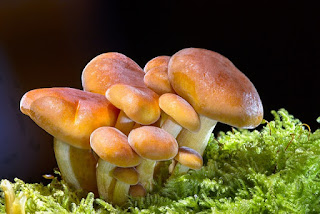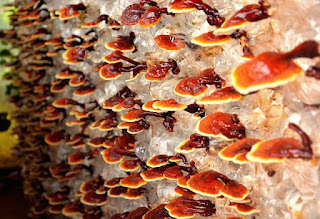What Are Mushrooms?
What are mushrooms
Mushrooms are an edible type of fungi. They can grow naturally in various environments around the world, and they come in many different shapes, sizes, and colors. Commonly cultivated species include shiitake, oyster, chanterelle, cremini, and portobello mushrooms. Some varieties have medicinal or psychoactive properties. They are widely used in cooking and can be eaten raw or cooked.
So where do mushrooms come from?
Mushrooms can naturally grow in the wild, feeding on decaying plant matter. They are also cultivated commercially for use in food and medicine. Farm-raised mushrooms typically include varieties such as a button or cremini mushrooms. Other species, such as porcini and chanterelle mushrooms, are gathered from the wild.
What are the types of mushrooms?
There are many different types of mushrooms, but the most common ones in cooking include:
- White or button mushrooms (Agaricus bisporus).
- Shiitake (Lentinula edodes).
- Oyster mushroom (Pleurotus ostreatus).
- Cremini (Agrocybe aegerita).
Other varieties include: portobello, enoki, maitake, medicinal reishi, psychedelic psilocybin, and edible morel mushrooms.
Many people need to familiarize themselves with the vast array of mushrooms that can be used in cooking. From white button mushrooms to cremini, maitake, and morel mushrooms, there are so many delicious varieties that you may not know where to start.
White Button Mushrooms Agaricus bisporus is one of the most commonly found mushrooms, often referred to as ‘white mushrooms’ or ‘button mushrooms. They have an earthy flavor, and their texture stands up well when cooked, making them a popular pizza topping, addition to sauces and soups, or sauteed as a side dish.
Oyster Mushroom Pleurotus ostreatus or oyster mushrooms differ in texture; they are smooth, firm, and chewy and have a mild, almost sweet flavor. Oyster mushrooms, which range in color from whites to pinks to blues, are lovely grilled on kebabs or tossed into stir-fry dishes for added flavor and crunch.
Shiitake Mushroom Lentinula edodes, or Shiitake mushrooms, are known for their meaty texture, nutty flavor, and medicinal properties. Traditional Chinese medicine uses shiitakes in herbal tonics. Still, they also make flavorful additions to vegetable dishes, pasta sauces, braised meats, and more.
Cremini Mushroom Agrocybe aegerita, also known as Cremini mushrooms, are similar in appearance to white button mushrooms but have slightly darker caps and a richer flavor. These mushrooms are incredibly versatile and can easily withstand heat during roasting, grilling, and sauteing applications.
Enoki mushrooms, also called enokitake, are a long-stemmed mushroom native to East Asia. With a thin stem and tiny cap, these delicate mushrooms have a mild yet distinctive taste and pleasant crunchy texture. Enoki mushrooms are best consumed raw, usually atop salads or as a garnish on top of stir-fries or soups.
Maitake Mushroom Ganoderma lucidum, known as Maitake mushrooms, can be identified by their distinctively fan-shaped fronds. The intense flavor of maitake mushrooms works wonderfully in lean proteins like chicken breast.
Mushrooms are delicious, versatile fungi that can be found naturally growing in a variety of environments around the world. But most people don’t realize that these mushrooms also originate from some unusual places – and many species have an interesting story behind how they came to be.
The classic white or button mushroom (Agaricus bisporus) is one of the most popular varieties used in cooking today. This mushroom comes from Europe, first recorded by French farmers in the 1600s. Over the years, the mushrooms spread across other regions, with large-scale commercial cultivation beginning in 20th-century France.
Oyster mushrooms (Pleurotus ostreatus) are gaining popularity as a tasty additive to meals and come with their unique history. These mushrooms were initially discovered growing on trees in North America’s eastern hardwood forests. Still, they did not become widely available until cultivated oyster mushrooms began appearing in Asian markets during the second World War.
Shiitake mushrooms (Lentinula edodes) likely have the oldest and longest journey among the famous mushrooms. These native Japanese mushrooms were first collected from wild populations at least 2000 years ago. Their name even translates to “mushroom of the Shiitake” for the tree where it grows: shii trees.
Cremini mushrooms, Agrocybe aegerita, are similar in shape to white button mushrooms but often have darker caps and more robust flavors. Originating in Italy, this mushroom type has been consumed since Roman times and was brought over to the United States in the 1800s.
Many other mushrooms exist, each with its distinct flavor and provenance. From matsutakes harvested in Japan’s forest floors, to China’s enokis, to salamander mushrooms that only grow near lightning strikes in British Columbia, every country has its edible fungus. As researchers continue to explore different habitats and ecosystems, new species of mushrooms may soon appear on our plates.
Whether you prefer your mushrooms sautéed, grilled, steamed, stuffed, or fried, there is no doubt that all mushrooms have fascinating stories waiting to be told.
Can mushrooms be eaten raw?
Yes, some mushrooms can be eaten raw. Although most varieties taste better when cooked or dried, a few types of mushrooms can be consumed raw without causing any health issues. These include a white button, enoki, maitake, and shiitake mushrooms. Eating these varieties raw allows you to enjoy the full flavor and nutritional benefits they provide—including fiber, essential vitamins and minerals, and antioxidants. However, it is important to remember that not all edible mushrooms are ideal for consumption in their natural state.
Some types, such as porcini, chanterelle, morels, and oyster mushrooms, should only be cooked before eating to reduce the risk of foodborne illness. How do mushrooms grow? Mushrooms grow in stages; it can take anywhere from a few days to several weeks for them to reach maturity. First, the mycelium, made up of hyphae, forms feeding networks in organic matter such as soil and wood.
Then, tiny primordia (fungal fruit bodies) emerge on the surface. The primordia develop into mushroom caps with an array of radiating gills underneath, where spores are produced. As the cap expands, the spores mature and disperse the mushrooms’ reproductive cells onto the ground or nearby objects.
Eventually, some of these spores land in the right environment and germinate, thus beginning the process again.




